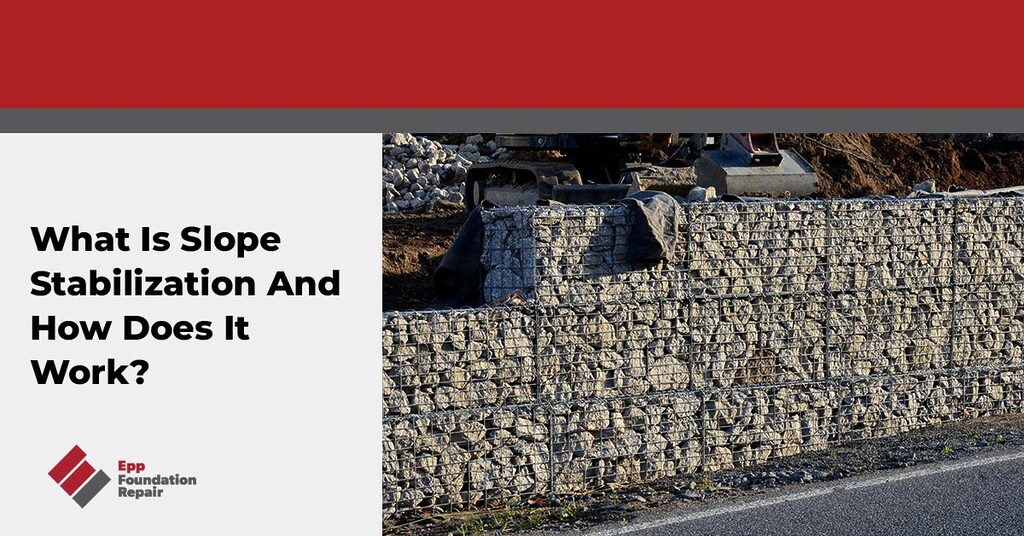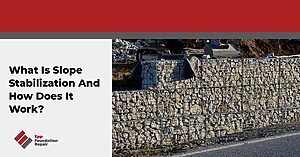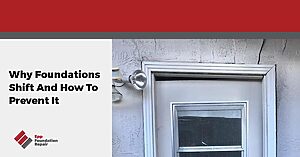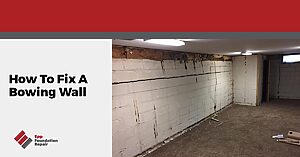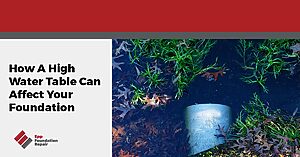When you picture your dream home, soil erosion and landslides probably don’t come to mind. Yet, for many homeowners, these issues can become all too real, especially if their property sits on or near a slope. Understanding and implementing slope stabilization methods can safeguard your property and ensure your family’s safety.
What Is Slope Stabilization?
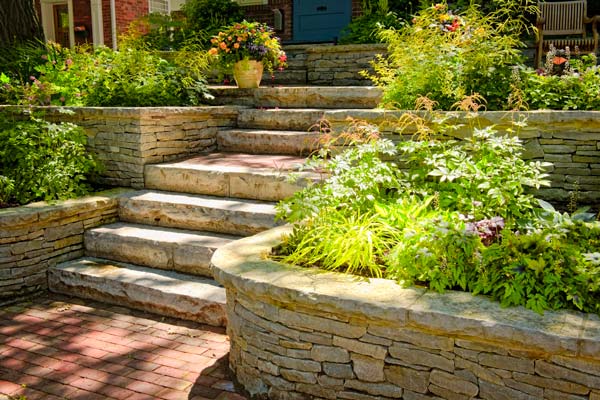
Understanding slope stabilization is crucial for homeowners in areas prone to slope instability. Unstable slopes can cause substantial property damage and pose serious safety risks. By learning to manage these issues effectively, you can safeguard your investment and preserve your home’s value.
Slope stabilization refers to a series of techniques and practices designed to prevent soil erosion and maintain the structural integrity of sloped land. These methods range from simple landscaping strategies to more complex engineering solutions.
Common Slope Instability Issues In Residential Areas
Unstable slopes in residential areas present significant challenges that can lead to property damage and safety hazards. Key issues include:
- Soil Erosion: One of the most frequent problems homeowners face is soil erosion. The gradual wearing away of soil can undermine home foundations, cause vegetation loss, and create unsightly landscapes, compromising the structural integrity of the land and buildings.
- Landslides: Landslides are sudden and often devastating movements of earth down a slope. Triggered by heavy rainfall, earthquakes, or human activity, landslides pose a grave risk by burying homes, roads, and infrastructure. They threaten human safety, making prevention and early detection crucial.
- Drainage Problems: Improper drainage on slopes can lead to water pooling and unintended flow, exacerbating erosion and increasing landslide risks. It can also result in home flooding, leading to costly repairs and health hazards from mold.
Issues like these can decrease property values, increase insurance rates, and necessitate expensive repairs, while safety risks endanger residents. Mitigating these risks requires early detection and regular maintenance, including proper drainage systems, retaining walls, and vegetation to stabilize slopes and prevent erosion.
Recognizing Signs Of Slope Instability
Early detection is key to preventing major issues. Here are some signs that your slope may be unstable.
- Cracks in the Ground or Walls: One of the most evident signs of slope instability is the appearance of cracks in the soil or in structures like retaining walls. These cracks often indicate shifting ground, which can compromise the integrity of buildings and infrastructure.
- Tilting Trees or Fences: Trees or fences that begin to lean or tilt unexpectedly may suggest that the ground beneath them is moving. This can be a precursor to larger ground movements and should be addressed promptly.
- Unusual Bulges in the Ground: Bulges or mounds in the terrain can indicate that material from beneath the surface is being pushed upwards, often due to pressure changes in the soil. If not corrected, this can lead to further instability.
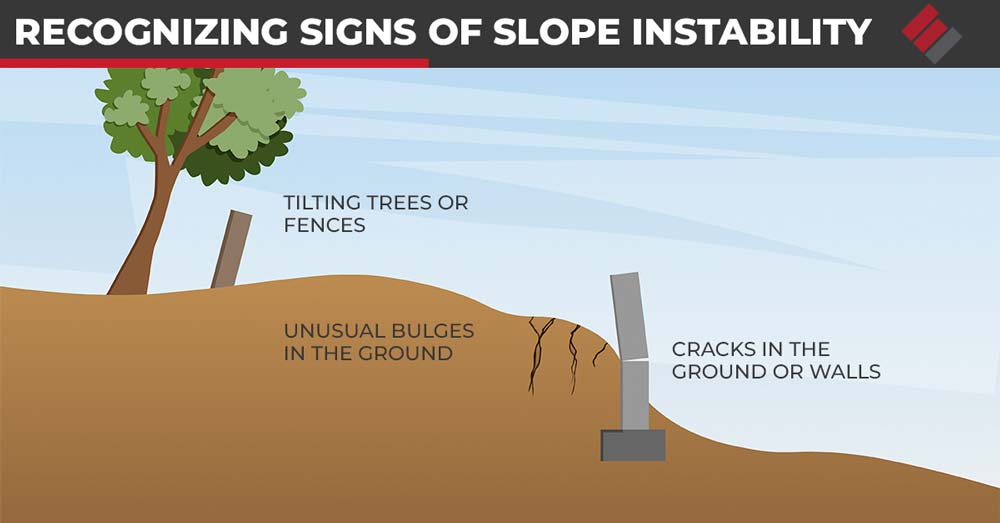
Basic Slope Stabilization Methods For Homeowners
Proper Landscaping And Vegetation
Strategic planting is one of the simplest ways to stabilize a slope. Plants with deep root systems, such as grasses and shrubs, can help hold the soil in place and prevent erosion. Ground cover plants are particularly effective in protecting the topsoil from being washed away.
Improving Drainage
Effective water management is crucial for maintaining slope stability. Installing drainage systems like French drains or swales can help redirect water away from vulnerable areas. Ensuring that gutters and downspouts are functioning properly also plays a significant role in preventing water accumulation.
Retaining Walls
Retaining walls provide structural support to a slope, preventing soil movement and erosion. They can be built using various materials, including stone, concrete, and timber. When properly designed and installed, retaining walls can enhance the stability and aesthetics of your landscape.
Wall Plate Anchors
Wall plate anchors are another effective method of stabilizing a slope. These devices consist of steel plates that are anchored into the ground and connected to retaining walls or structures above. They provide additional support and reinforcement against lateral forces.
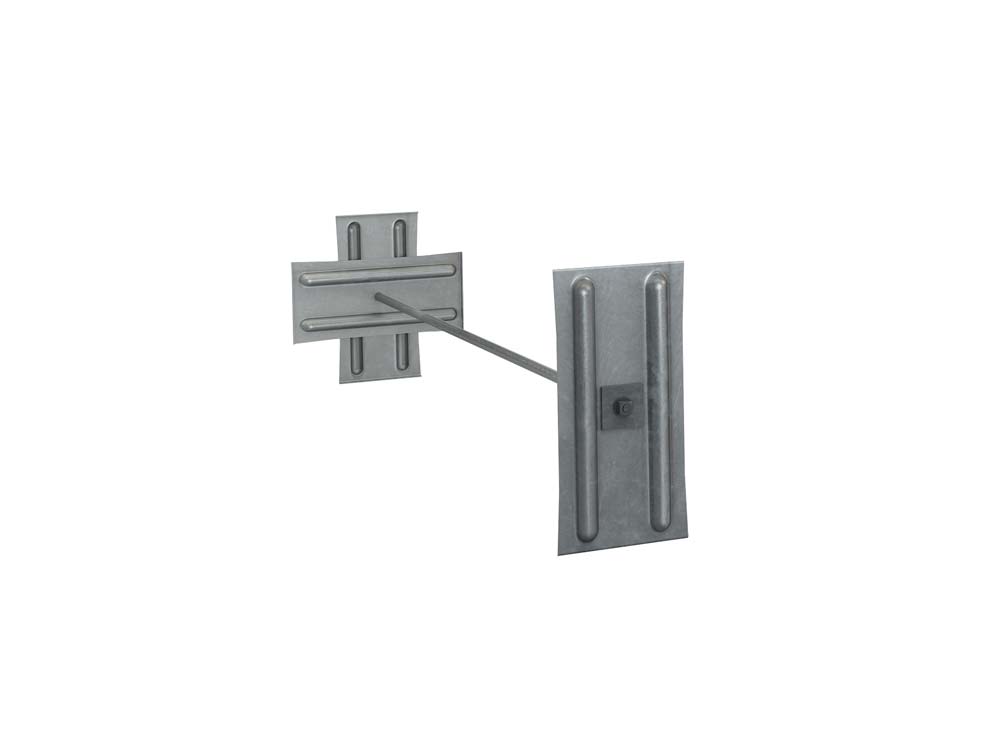
A Closer Look At Wall Plate Anchors
Wall plate anchors are recognized as one of the most cost-effective and reliable solutions for addressing slope instability. These systems are designed to provide reinforcement for slopes and retaining walls.
One of the primary benefits of wall plate anchors is their ability to adapt to various soil conditions, making them suitable for a wide range of geographical locations. As soil movement, landslides, and erosion can pose significant risks to properties, implementing wall plate anchors offers property owners peace of mind. These anchors are not only crucial for preventing sudden failures but also play a vital role in maintaining landscape aesthetics and preserving the natural environment.
How Wall Plate Anchors Work
Wall plate anchors utilize a system of steel plates and rods pushed into the soil to offer additional structural support. By anchoring the retaining wall to the stable soil behind, they create a counterbalance, preventing wall movement or collapse under pressure. The process is relatively straightforward: drill holes in the retaining wall, insert the rods and secure them with steel plates.
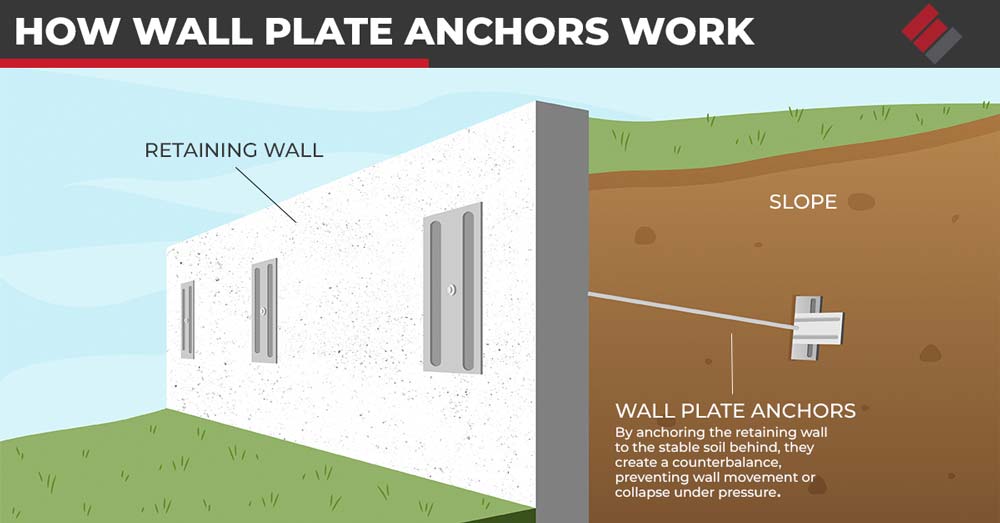
Key benefits of Wall Plate Anchors for residential slope stabilization:
- Effortless Installation: Wall plate anchors are relatively easy to install, causing minimal disruption to the surrounding landscape.
- Adaptability: They can be adjusted over time to accommodate soil movement or changing landscape conditions.
- Long-lasting: They offer a durable and cost-effective solution for slope stabilization.
- Enhanced Stability: They improve the overall stability of sloped areas by reinforcing existing retaining walls against soil and water pressures.
- Safety and Peace of Mind: By ensuring retaining walls remain intact, they safeguard properties and residents from potential risks of soil movement and erosion.
When To Call A Professional
Obviously, an unstable slope around your house can be a very serious problem, and it is important to know when to call a professional to assess and fix any slope instability issues you may be facing.
Assessing The Severity Of The Problem
If you suspect that your slope issues are beyond DIY solutions (most are), it’s essential to get a professional inspection to assess the severity of the problem. This is especially true if you notice signs of significant soil movement, extensive cracking in retaining walls, or persistent drainage issues, which can indicate an unstable slope.
Importance Of Geotechnical Surveys
Geotechnical surveys provide crucial data for developing effective stabilization strategies. These surveys involve analyzing soil composition, slope angles, and other factors that impact slope stability. A foundation specialist can use this information to recommend the most appropriate stabilization methods for your specific situation.
Permits And Regulations
Undertaking slope stabilization projects may require permits and adherence to local regulations. Before starting work, it’s essential to consult with local authorities and obtain any necessary approvals. A professional contractor can help ensure that your project complies with all relevant laws and regulations.
Find The Help You Need
Don’t let slope instability around your home become a costly problem. Recognizing the signs of soil movement and erosion is critical to safeguarding your property. Professional assessments and geotechnical surveys are key to accurately identifying the severity of these issues and implementing the right stabilization strategies.
EPP Foundation Repair stands ready to help you navigate these challenges with expertise. We offer free estimates and guarantee our work, ensuring that your home remains safe and secure. Contact us today to discuss your slope stability needs and take the first step toward a solid foundation!

